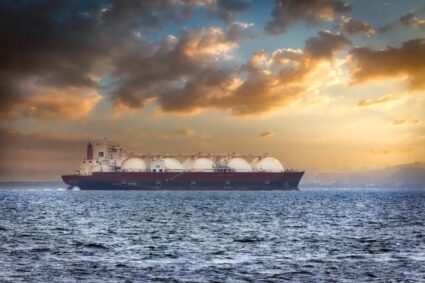Russia Sends LNG Ships to Kaliningrad
February 28, 2022

Russia has sent three large ships carrying liquified natural gas (LNG) to Kaliningrad, its port sandwiched between Poland and Lithuania on the Baltic coast. Experts say it is an attempt to keep access to gas supplies in case conflict stemming from Russia’s invasion of Ukraine cuts off gas pipeline flows.
Russia’s invasion of Ukraine has highlighted the country’s prominent place in global energy markets. It was the largest supplier of natural gas and oil to the European Union last year. Sending LNG tankers to Kaliningrad illustrates Moscow’s potential vulnerability should Russia’s pipeline flow be cut off as well as Russia’s ability to prepare for conflict and use its position as a major energy provider.
The Marshal Vasilevskiy, one of the tankers, was stationed off the coast of Kaliningrad by PJSC Gazprom, the Russian majority state-owned gas company, in late January. More recently, Gazprom sent the Energy Integrity and the Velikiy Novgorod, the other two tankers, to Kaliningrad. According to analysts, the two tankers are expected to ship gasoline out of the region within the coming weeks, and the three vessels have enough LNG combined to satisfy Kaliningrad’s gas demand for 4-5 weeks. Lithuanian officials said that stationing LNG ships in the Baltic Sea indicates that Russia is preparing for potential widespread interruptions of its pipeline.
Kaliningrad, captured from Nazi Germany in World War II, remained a part of Russia after the fall of the Soviet Union. Even though Kaliningrad is not expected to play a substantial role in Russia’s invasion of Ukraine, it carries significant strategic importance for Moscow as a naval and air base located in the middle of a region comprised of North Atlantic Treaty Organization (NATO) states. Over the past year, Europe and the United States have turned more to LNG in an attempt to reduce energy reliance on Russia. And recently, there have been more calls to reduce the West’s reliance on Russia. With LNG, gas is liquified and subcooled by lowering its temperature to roughly 160° C. The gas is then transported internationally via tankers, warmed up, which re-gasifies it into its original state, and distributed and sold.
